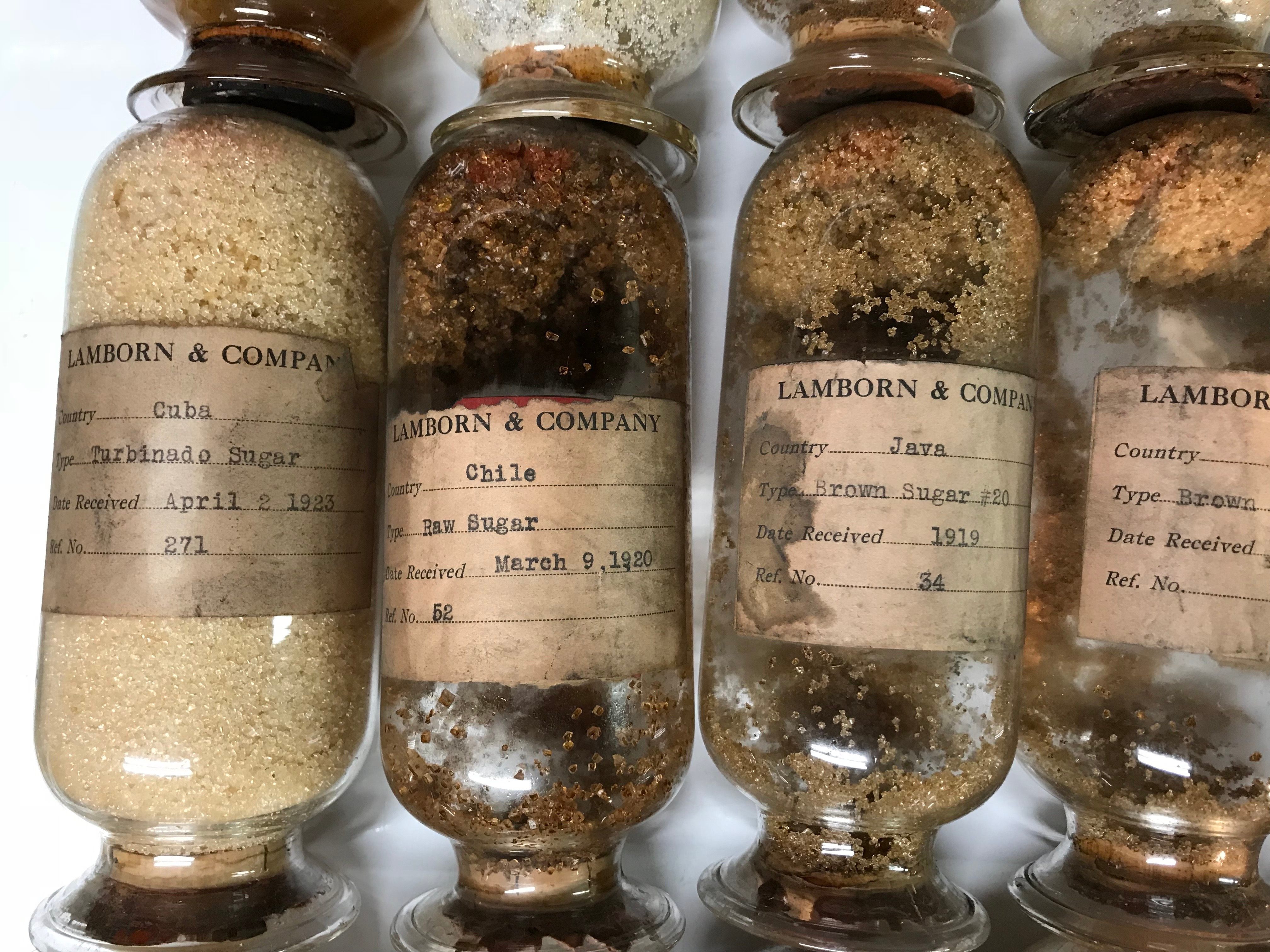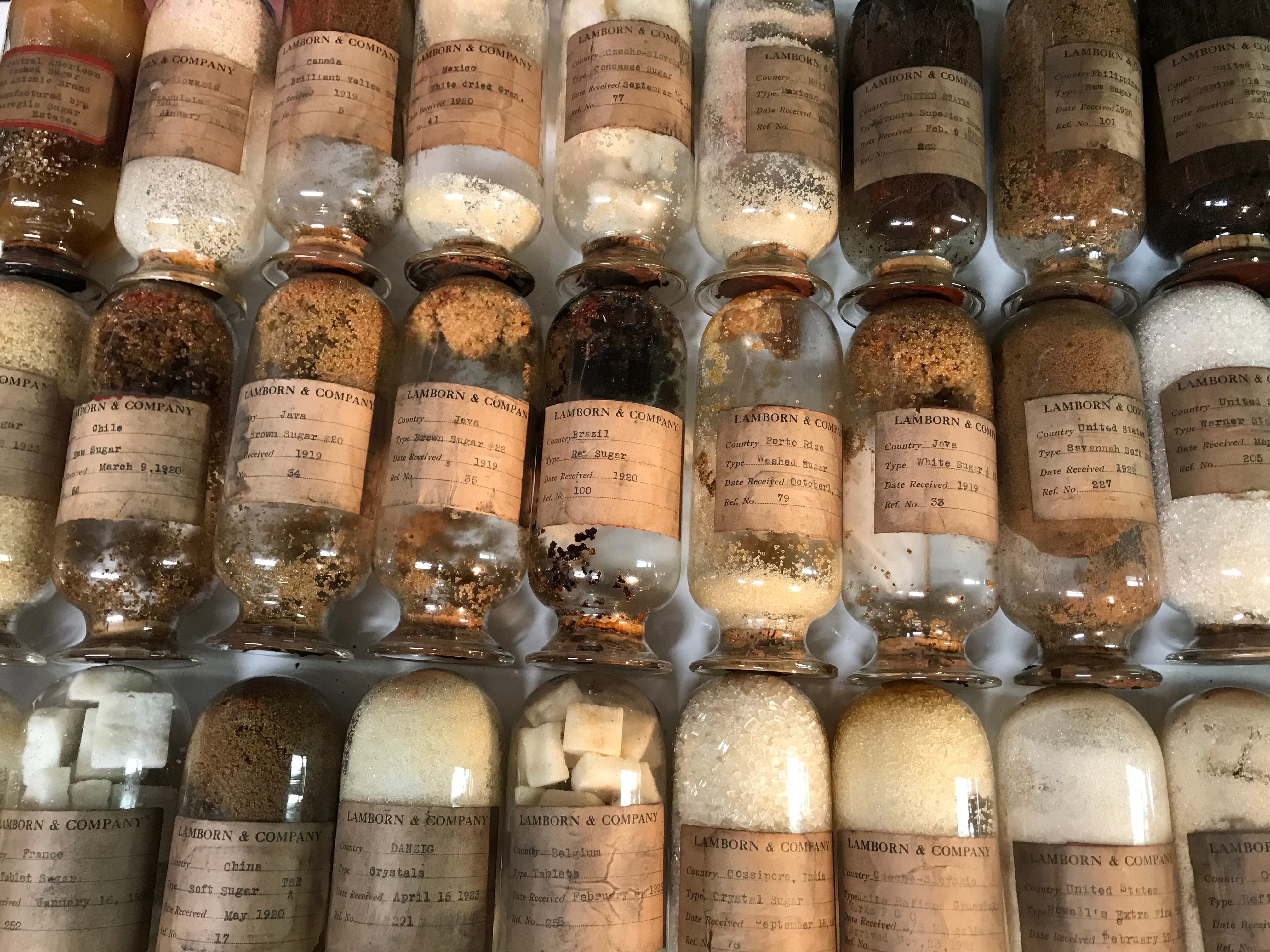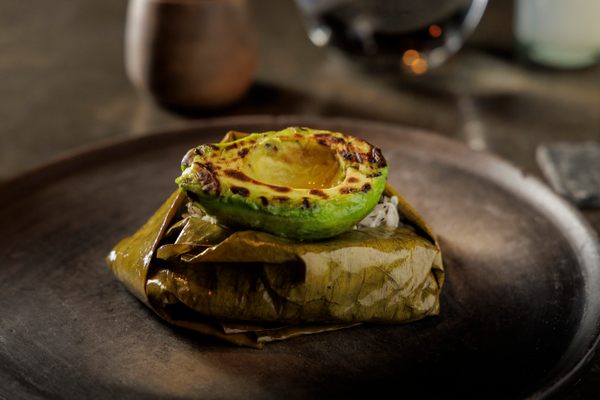A Cache of Historical Sugar Samples Seeks a New Home
A very sweet find.

A couple of decades ago, James Sciales received a wooden footlocker from a relative who knew about his fondness for old trunks. The box was relatively plain—these days, he uses it to store fishing equipment—and he didn’t expect anything to be inside. Instead, he found a treasure trove: 47 glass vials, each around 6.5 inches long, filled with different kinds of sugar. “It wasn’t what I expected,” he says, laughing. “A little bit of a secret surprise.”
Understanding the history behind those old sugar samples has required a bit of digging from Sciales, though many questions remain unanswered, he says. Each tube has a label, stating its place of origin, what kind of sugar it contains, the date it was received (these range from around 1919 to 1923), and a reference number. They seem to have been the property of Lamborn & Company, one of the largest sugar brokerage firms in the world at that time. The company was a major player in the sugar market, supplying the Allies with around 50 percent of their sugar needs throughout the First World War.*
There’s a staggering degree of variety among these sugar samples—sugar in tablet form, from Belgium; molasses-dark “Arbuckle soft sugar,” from the United States; red sugar from Brazil. Even after nearly a century in their jars, some are still dazzlingly white. Others are almost black in color, with a syrupy sheen over their crystals. Today, most sugar is made from sugar cane—but many of these come from sugar beet or the corn we use today to make high fructose corn syrup. Each glass container is stoppered with a cork and shut fast with a wax seal. In all, Sciales says, these sugars come from some 17 different countries, scanning the globe from Puerto Rico to Canada, from India to Indonesia, and from China to France.


By the early 20th century, the sugar industry was booming, with the former luxury an indispensable part of the everyday pantry. The industrial revolution made a once-laborious process of growing and refining sugar easier and cheaper, while competition around the world kept prices down. But in 1918, just before many of these samples were produced, the United States underwent a sugar shortage that worried the U.S. Senate. Americans were eating nearly 4,000,000 tons of sugar a year, a little under half what they do today, but a two-year shortage seemed to be on the horizon.
The precise causes for this shortage are extremely complicated. Some have to do with international tensions in the wake of the First World War: In 1919, New Zealand’s Dominion Post reported that the U.S. had failed to obtain control of Cuban and Hawaiian sugar crops, which had been bought up instead by Britain and Japan. But there were other, more convoluted reasons, Arthur Lamborn, who ran Lamborn & Co., told the U.S. Senate.
“The sugar market has always been checkered and never dull,” he said. “That is the best way to explain it, and it is true.” Some of these factors had to do with the growing patterns of sugar cane and sugar beet, others with complex market forces. In still other cases, shipments were simply delayed by months at a time. The American public were told they would have to cut down—from around eight pounds per month per household to three, with domestic suppliers seeking to fill these demands on its own.

How these constraints affected these specific sugar samples, however, is unclear. Were they an attempt to forge ties with new sources for sugar, or simply the range of options on offer for those who could afford it? The vials came with no paperwork, other than their typewritten labels—so currently, there’s no way to know where they were destined or to whom they belonged. Sciales is sure there’s a story in these crystals, but there’s no clear way to read them, other than as part of a hugely complex, international chain of industry.
In the meantime, after 20 years of custodianship, Sciales is looking for a new home for these samples, whether in the hands of a collector or in a museum. At the moment, he stores them in an old Victorian steamer trunk at his home in New York, but he can’t help but feel that there’s an even better place for them to be. They’re unique items with a story to tell, he says, “and there’s someone in the world who they’ll be even more special to.”
*Update 1/30: This article has been updated to clarify the influence of Lamborn & Company in the early 20th century.
If you believe you know of a good home for this collection, feel free to get in touch by emailing natasha.frost@atlasobscura.com.
Gastro Obscura covers the world’s most wondrous food and drink.
Sign up for our regular newsletter.















Follow us on Twitter to get the latest on the world's hidden wonders.
Like us on Facebook to get the latest on the world's hidden wonders.
Follow us on Twitter Like us on Facebook